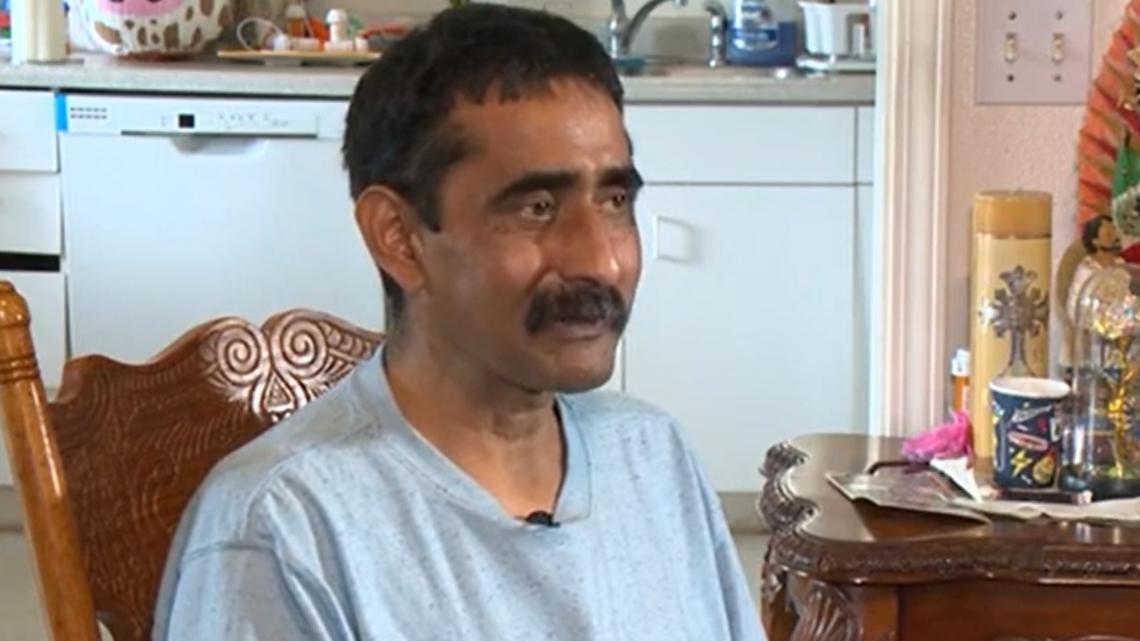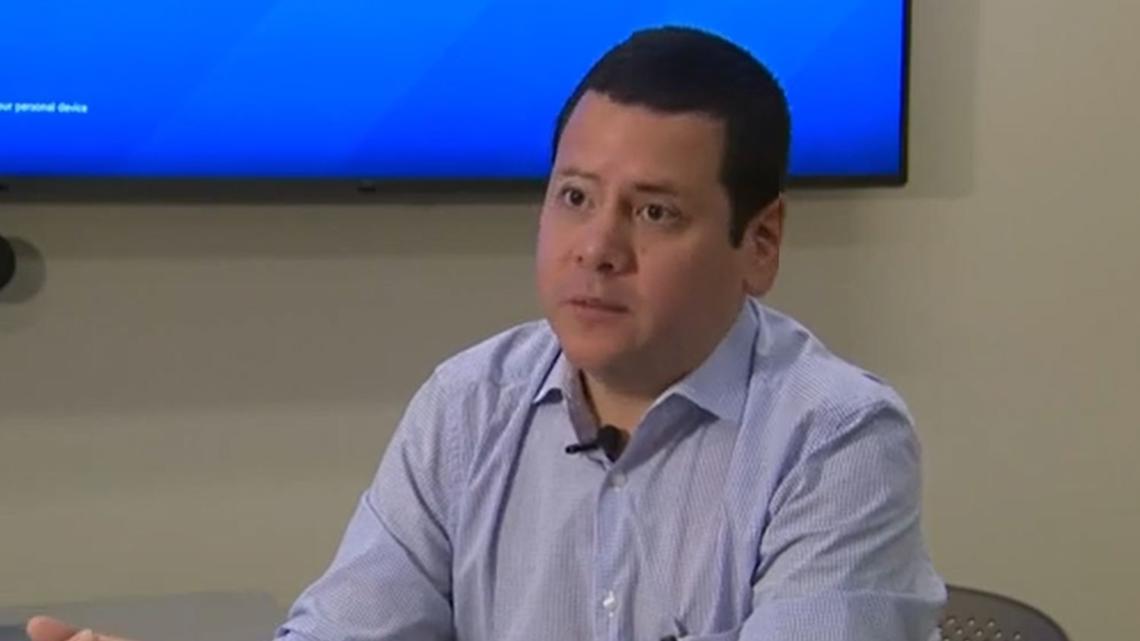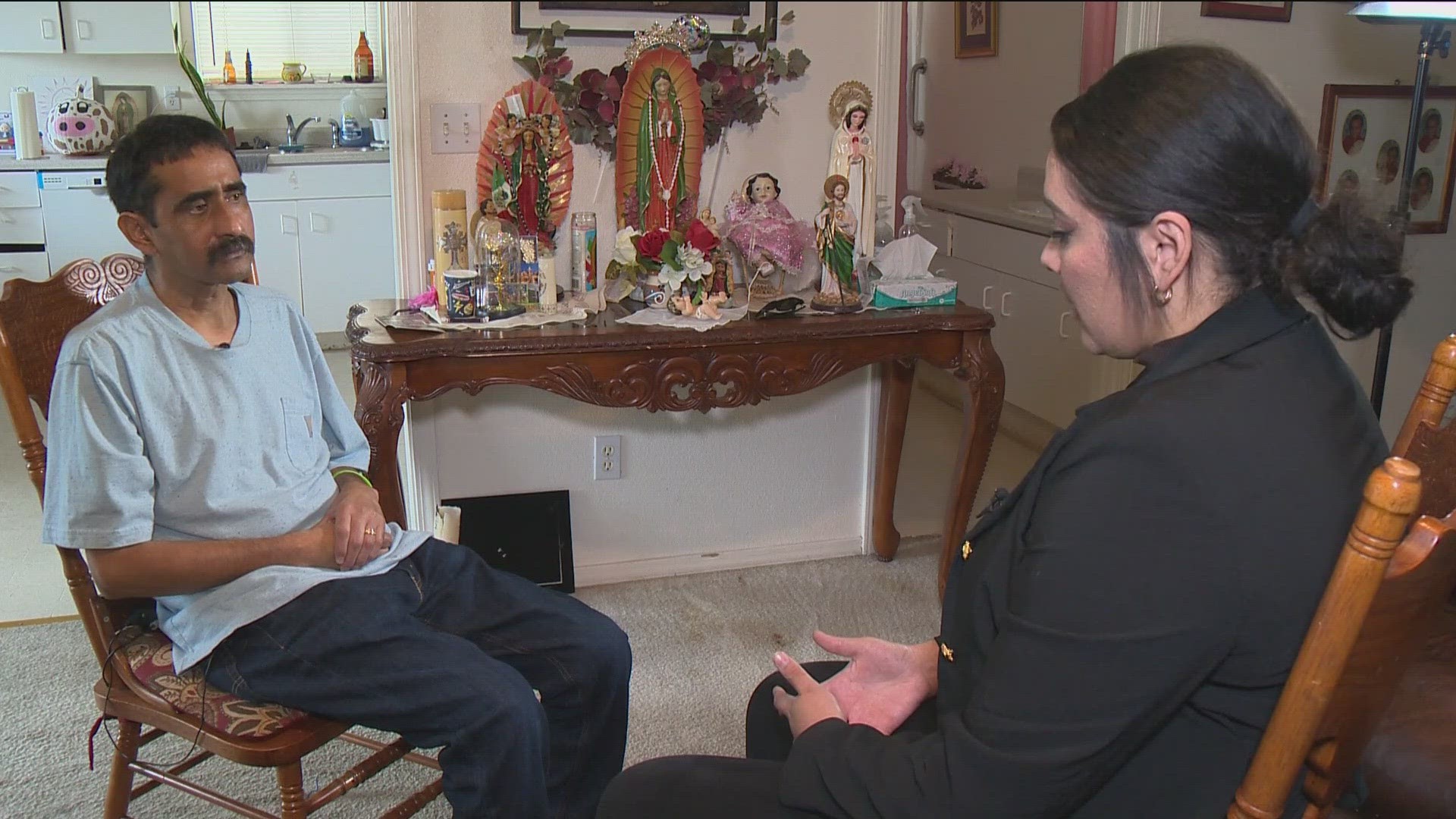BOISE, Idaho — The Hispanic population is the fastest-growing minority group in the United States, which is also true in the Gem State. The risk of diabetes is also growing in that community.
According to data from the CDC, Hispanics are more likely than other ethnicities to develop type 2 diabetes. After an investigation by KTVB's Brenda Rodriguez, it was uncovered that it's much more than the foods they eat.
"At first, it was 14 pills, and now it's a little less," said Kuna resident Aurelio Perez Ortega.
Perez Ortega said at a young age, he experienced common symptoms of diabetes.
"I had a lot of thirst," Perez Ortega said. "My mom told me I wasn't doing well and to go check my sugar levels or something. I would tell her, 'No, I'm okay.'"
Perez Ortega said he put off going to the doctor because he would need to go to his appointment without pay, and he didn't want to miss work. The cost of going to the doctor's office also worried him.


At 23-years-old Perez Ortega was diagnosed with type 2 diabetes. During that time, he said that he didn't feel much different, but 20 years later, things have changed.
"Now I feel everything," he said. "My kidneys started to fail. They started me on dialysis, and that's when I had a stroke."
Perez Ortega said that the stroke changed his life.
"It affected my vision," he said. "I can't see well. It also affected my body, and I can't walk very well. It's mostly my vision that I can't work right now."
In 2021, more than 130,000 Idahoans in the state had diabetes, and 541 died from the disease, according to a survey by the Idaho Department of Health and Welfare.
"Diabetes is, you know, can be very serious," said Dr. Alejandro Necochea, St. Luke's Medical Director.


Necochea pointed to a map and said the people with the highest risk and burden are those in Shoshone and Owyhee Counties.
"So the prevalence is higher in some of these counties," he said.
He also said they know that the problem is getting worse, especially those in a certain group of people.
"Hispanic populations also have a higher prevalence of diabetes compared to non-Hispanic whites," Necochea said.
According to information from the CDC, they report 12.4% of Hispanics were diagnosed with diabetes in the last five years, compared to 7.8% of non-Hispanic whites. The same trend is here in Idaho.
Nechochea said in Idaho, 12% of Hispanics and Latinos have diabetes vs 9% of non-Hispanics.
However, he said that more people are reluctant to answer surveys on the phone, or sometimes people don't have access to labs. The cases might be higher due to that.
One of the characteristics of the disease is high blood sugar.
"In type 1 diabetes, your pancreas is not producing insulin, whereas in type two diabetes, over time, your body loses the capacity to respond effectively to diet to the insulin that your body may be making," Nechochea said. "Or maybe your pancreas doesn't produce as much insulin as it used to."
Nechochea told KTVB there is more than their diet impacting the community.
"There appears to be some genetic components that may make people more likely to have diabetes," he said.
"I think the bigger message is that a lot of diabetes is really related to the social and economic factors that surround us," Necochea said. "Access to healthy foods, ability to engage in healthy habits, educational level, level of stress, how much sleep do we have and access to health care."
Health care isn't always easy to access for some in the Hispanic community, where 37% of Hispanics in Idaho don't have health insurance, according to Dr. Nechochea.
"Yeah, there is certainly a portion of our Hispanic community that is undocumented," Necochea said. "Health insurance is just a complicated landscape in the United States."
Necochea said not having access to providers and health information in Spanish is also contributing to the growing numbers of diabetes in our Hispanic community. Another contributing factor is the high cost of insurance, and this is the case for Ortega, who recently received health insurance a couple of years ago.
Ortega said that he pays roughly $400 a month for his insurance and $1,800 for medication, which he says is a lot.
Nechochea said there is no cure for type 1 diabetes, but those with type 2 still have hope with a couple life-style adjustments.
"One quick and easy thing that you can do is just stop drinking soda," he said. "For example, just replace soda with water and sugary drinks. Just start walking, you know, be active three times a week, 30 minutes, three times a week, go up to 30 minutes, five times a week.
From Ortega's experience, starting a better diet and exercise at a young age is key.
"I'd say take care of yourself," he said. "When you're young, you don't feel anything, but once you get older, it does."
Watch more Local News:
See the latest news from around the Treasure Valley and the Gem State in our YouTube playlist:
HERE ARE MORE WAYS TO GET NEWS FROM KTVB:
Download the KTVB News Mobile App
Apple iOS: Click here to download
Google Play: Click here to download
Watch news reports for FREE on YouTube: KTVB YouTube channel
Stream Live for FREE on ROKU: Add the channel from the ROKU store or by searching 'KTVB'.
Stream Live for FREE on FIRE TV: Search ‘KTVB’ and click ‘Get’ to download.

